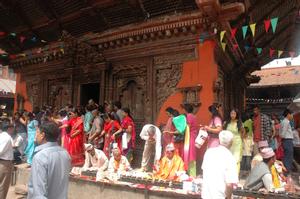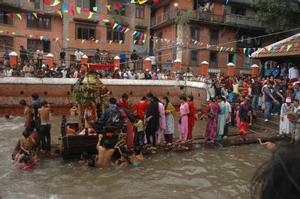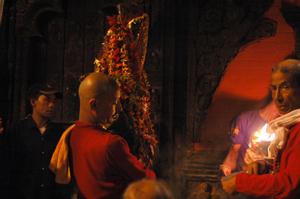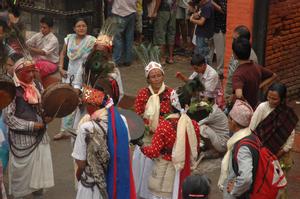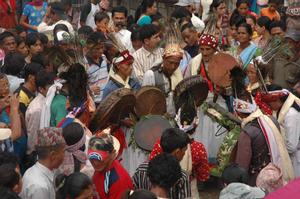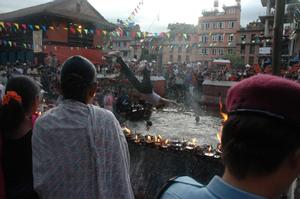Kumbheśvara Jātrā
On the day of the August full moon, Nepal celebrates Janai Pūrṇimā, the festival in which Brahmins renew the sacred cord they wear around their bodies. The term janai refers to the Brahmin cord, and pūrṇimā means ‘full moon‘. All others can have Brahmins tie a protective yellowish or reddish ribbons around their wrist on this day. This is called Rakṣā Bandhan.
A particularly large number of people come to Kumbheśvara in Patan on this occasion, where another ritual is performed in addition to the tying of the bands. The main temple here is dedicated to Śiva, who, however, bears the name Kumbheśvara (Lord of the Water Pot). In the temple compound of this Śiva sanctuary there is a water basin, in which a pedestal had been erected the previous evening, on which, after a solemn procession, one of the two golden Śivaliṅga icons from the main temple was positioned. This is the second icon, which is used only once a year on this occasion. Its distinctive feature is that it consists mostly of a coiled snake.
After sunset, after the deity in the water basin has been visited by countless worshippers throughout the day, the snake liṅga icon is brought back to the temple in a ceremonial procession and stored in a side niche.
The water basin of Kumbheśvara is associated with the lake Gosāiṁkuṇḍ in the Himālaya, north of Kathmandu, where Śiva, according to myths, is said to stay on that day. Accordingly, the return of the liṅga attachment from the water basin to the temple could symbolize the deity's return from its journey.
Veit Angermeier
